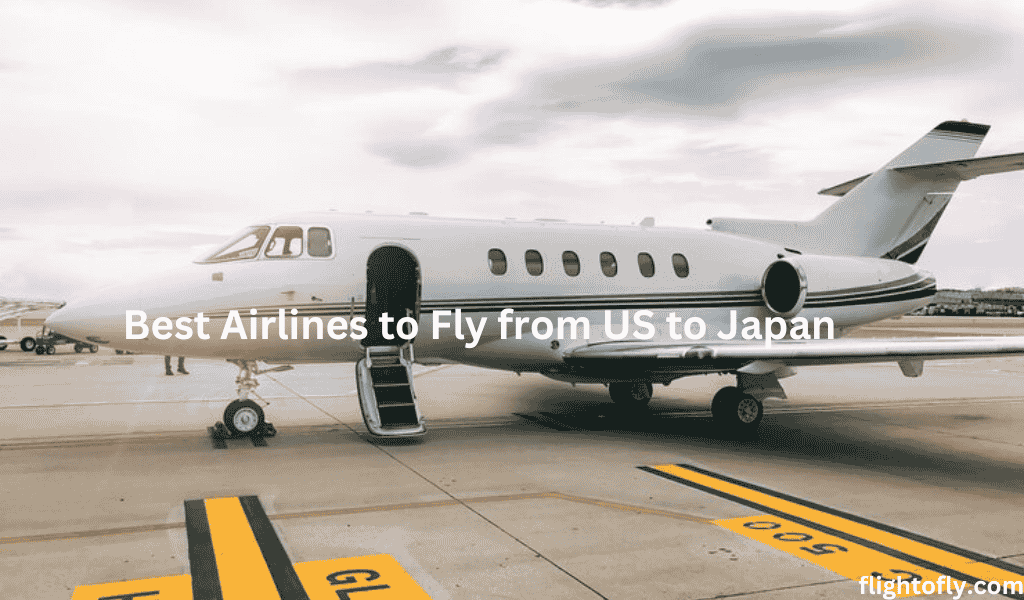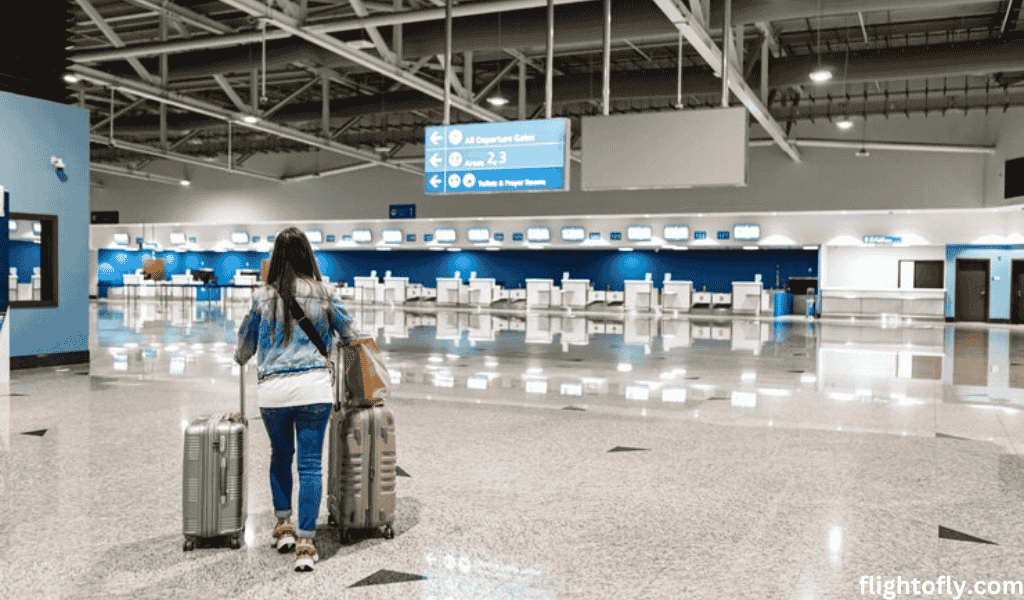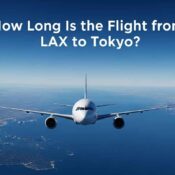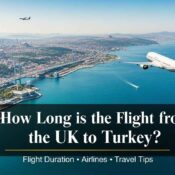
Best Airlines to Fly from US to Japan
The journey from the United States to Japan is like strolling into a beautiful blend of futuristic innovation and timeless tradition. From dazzling cityscapes and bustling streets to peaceful temples and cultural landmarks, Japan offers a truly unforgettable experience. However, before the adventure begins, there’s the long-haul flight, which is typically 10 to 14 hours across the Pacific. Choosing the right airline can make all the difference. Whether it’s extra legroom, quality in-flight meals, or dependable schedules, a great airline sets the tone for your journey. The best airlines to fly from the US to Japan, comparing routes, pricing, comfort, and travel tips to help you make the best choice for your trip.
Check: Best Airlines to Fly from the US to Europe – Compare Top Airlines
Top Airlines to Fly from the US to Japan
Here are the top airlines to fly from the US to Japan:
1. Japan Airlines (JAL)
Japan Airlines, known as JAL, focuses on traditional Japanese hospitality. From the moment you board, you’ll notice a calm and efficient atmosphere. Flight attendants greet you with a warm smile and assist you with your carry-on items if you need help.
| Routes | Flight Durations | Budget (Round-Trip Economy) | Departure Times |
| Los Angeles (LAX) → Tokyo (HND) | ~11 hours (nonstop) | $900–$1,500 | Morning or early afternoon |
| New York (JFK) → Tokyo (HND) | ~14 hours (nonstop) | $1,000–$1,500+ | Late morning or afternoon |
| Chicago (ORD) → Tokyo (NRT) | ~13 hours (nonstop) | $900–$1,400 | Midday departures |
Why Choose JAL?
- Cabin Experience
Economy Class seats feature good legroom, adjustable headrests, and personal entertainment systems. If you want more space, try JAL’s Premium Economy. Business Class includes lie-flat seats, gourmet dining, and noise-canceling headphones. - Meals and Service
JAL’s meal selection includes Japanese cuisine (such as soba noodles, fresh sushi, and miso soup) and Western dishes. Flight attendants pay attention to every request and keep your cabin clean and comfortable. - Frequent Flyer Program
JAL is part of the Oneworld alliance, so you can earn or redeem miles with partners like American Airlines and British Airways. - Ideal For
Travelers seeking high-quality service, Japanese food options onboard, and a direct path to Tokyo from several major US airports.
2. All Nippon Airways (ANA)
All Nippon Airways, or ANA, has a reputation for impeccable service and punctual flights. Many passengers consider ANA one of the best airlines worldwide due to its comfortable cabins and polite flight attendants.
| Routes | Flight Durations | Budget (Round-Trip Economy) | Departure Times |
| San Francisco (SFO) → Tokyo (HND) | ~11 hours (nonstop) | $900–$1,500 | Late morning or early afternoon |
| Houston (IAH) → Tokyo (NRT) | ~13 hours (nonstop) | $1,000–$1,600 | Midday or afternoon |
| Seattle (SEA) → Tokyo (HND) | ~10 hours (nonstop) | $900–$1,500 | Morning to midday |
Why Choose ANA?
- Cabin Experience
Economy Class includes personal TVs, comfortable seats, and sometimes footrests on certain aircraft. Premium Economy offers more width and extra reclining, while Business Class includes fully flat seats with privacy partitions on long-haul flights. - In-Flight Dining
ANA’s meal menus blend Western and Japanese options. Passengers love the detailed presentation, fresh ingredients, and variety of snacks between meals. - Frequent Flyer Program
ANA belongs to Star Alliance. You can earn miles on partner airlines like United or Lufthansa and redeem them for future flights or seat upgrades. - Ideal For
Travelers who appreciate punctual service, well-appointed cabins, and top-tier Japanese hospitality.
3. Hawaiian Airlines
Hawaiian Airlines gives you a chance to break up a long journey by stopping in Honolulu. This approach lets you add a beach getaway before or after your Japan adventure. If you live on the West Coast, you might combine flights to Hawaii with onward travel to Tokyo or Osaka.
| Routes | Flight Durations | Budget (Round-Trip Economy) | Departure Times |
| Los Angeles (LAX) → Honolulu (HNL) → Tokyo (HND/NRT) | ~5–6 hours (LAX-HNL), then ~8–9 hours (HNL-Tokyo) | $700–$1,200+ | Morning or late evening from HNL |
| San Francisco (SFO) → HNL → Osaka (KIX) | ~5–6 hours (SFO-HNL), then ~9–10 hours (HNL-KIX) | $800–$1,300 | Afternoon or night departures from HNL |
Why Choose Hawaiian Airlines?
- Cabin Experience
Economy Class seats on Hawaiian’s wide-body aircraft (A330s) include seat-back entertainment systems and a touch of Hawaiian décor. Extra Comfort seats grant you a few more inches of legroom. In Business Class, some planes feature fully flat seating. - Island-Inspired Meals
Hawaiian Airlines often serves island-style meals that include pineapple, fresh fruits, and Asian-fusion dishes. You can enjoy a taste of Hawaii before you land in Japan. - Frequent Flyer Program
HawaiianMiles allows you to earn miles on Hawaiian Airlines flights and select partners. You can use these miles for inter-island flights or upgrades on longer routes. - Ideal For
Anyone who likes the idea of a tropical break en route to Japan. If you prefer a single long-haul flight, though, Hawaiian might not be the most direct choice.
4. Korean Air
Korean Air runs flights to Japan through Seoul’s Incheon International Airport (ICN). If you love exploring new places, you can extend your layover to see a bit of South Korea. Many travelers praise Korean Air’s quality cabins and reliable schedules.
| Routes | Flight Durations | Budget (Round-Trip Economy) | Departure Times |
| Los Angeles (LAX) → Seoul (ICN) → Tokyo (NRT/HND) | ~12–13 hours (LAX-ICN) + ~2 hours (ICN-Tokyo) | $800–$1,400 | Evening or late-night from LAX |
| Chicago (ORD) → ICN → Tokyo (HND) | ~14 hours (ORD-ICN) + ~2 hours (ICN-Tokyo) | $900–$1,400 | Late afternoon or evening from Chicago |
| New York (JFK) → ICN → Osaka (KIX) | ~14–15 hours (JFK-ICN) + ~2 hours (ICN-KIX) | $1,000–$1,500 | Afternoon or evening from JFK |
Why Choose Korean Air?
- Cabin Experience
Economy seats usually include a 33- to 34-inch pitch, which feels more spacious than some competitors. Prestige (Business) Class features lie-flat seats on many long-haul aircraft. First Class includes even more exclusive cabin space. - Meal Options
Korean Air serves both Western and Korean dishes. Many travelers look forward to the airline’s signature bibimbap, a tasty rice dish packed with vegetables and spicy sauce. - Frequent Flyer Program
SKYPASS, Korean Air’s loyalty program, belongs to the SkyTeam alliance. You can earn or redeem miles with Delta, Air France, KLM, and others. - Ideal For
Travelers are open to a Seoul stopover. This option might save money compared to direct flights, and you can sample Korean culture before you continue to Japan.
5. Asiana Airlines
Asiana Airlines is another strong carrier from South Korea. It competes with Korean Air on many US-Asia routes and offers a comfortable experience. Many travelers notice Asiana’s attentive cabin crew and tasty in-flight meals.
| Routes | Flight Durations | Budget (Round-Trip Economy) | Departure Times |
| San Francisco (SFO) → Seoul (ICN) → Tokyo (HND) | ~12–13 hours (SFO-ICN) + ~2 hours (ICN-HND) | $800–$1,400 | Late afternoon from SFO |
| Seattle (SEA) → ICN → Osaka (KIX) | ~11–12 hours (SEA-ICN) + ~2 hours (ICN-KIX) | $900–$1,400 | Morning or afternoon from Seattle |
| Los Angeles (LAX) → ICN → Fukuoka (FUK) | ~12–13 hours (LAX-ICN) + ~2 hours (ICN-FUK) | $900–$1,500 | Evening or late-night from LAX |
Why Choose Asiana Airlines?
- Cabin Experience
Economy Class seats come with seat-back entertainment, a footrest on certain aircraft, and a fair amount of legroom. Business Smartium Class features lie-flat seats on many long-haul routes. - Cuisine and Service
Asiana’s menu features Korean staples like bibimbap plus Western dishes. Flight attendants often come through the cabin with extra snacks, beverages, and friendly service. - Frequent Flyer Program
Asiana Club lets you earn miles for flights with Asiana and Star Alliance partners. You can redeem miles for flights or seat upgrades. - Ideal For
Passengers who want a reliable one-stop option to Japan. You can also enjoy a short trip in Seoul if you schedule a longer layover.
6. EVA Air
EVA Air is a Taiwanese airline that connects US cities to Japan via Taipei. Passengers give EVA Air high marks for cleanliness, onboard comfort, and friendly service. You’ll have a short or medium-length layover in Taipei (TPE) before continuing to Tokyo, Osaka, or other Japanese cities.
| Routes | Flight Durations | Budget (Round-Trip Economy) | Departure Times |
| New York (JFK) → Taipei (TPE) → Tokyo (NRT) | ~15–16 hours (JFK-TPE) + ~3 hours (TPE-NRT) | $900–$1,500 | Late night from JFK |
| Los Angeles (LAX) → TPE → Osaka (KIX) | ~13–14 hours (LAX-TPE) + ~3 hours (TPE-KIX) | $800–$1,500 | Late evening from LAX |
| San Francisco (SFO) → TPE → Fukuoka (FUK) | ~13–14 hours (SFO-TPE) + ~3 hours (TPE-FUK) | $900–$1,500 | Evening from SFO |
Why Choose EVA Air?
- Cabin Comfort
EVA invests in modern aircraft with comfortable seats, adjustable headrests, and good seat pitch. Premium Economy (Elite Class) offers significantly more space and a dedicated cabin area. Business Class (Royal Laurel) gives you lie-flat seats and extra privacy. - Dining and Unique Themes
EVA’s meals include Taiwanese-inspired dishes, Western options, and special creations on Hello Kitty-themed flights. You can also request a variety of special meals if you have dietary restrictions. - Frequent Flyer Program
EVA’s Infinity MileageLands lets you earn miles on Star Alliance flights. You can redeem these miles for future journeys or seat upgrades. - Ideal For
Travelers who appreciate a connection in Taipei or want a top-quality Premium Economy product. EVA Air often ranks highly in global airline surveys for service and cabin cleanliness.
7. Singapore Airlines
Singapore Airlines delivers one of the most luxurious flying experiences. Even though it’s not the most direct way to reach Japan, some travelers choose Singapore Airlines for its superior comfort and service. You’ll likely connect through Singapore’s Changi Airport, which is famous for its indoor waterfall, themed gardens, and plentiful dining options.
| Routes | Flight Durations | Budget (Round-Trip Economy) | Departure Times |
| Los Angeles (LAX) → Singapore (SIN) → Tokyo (HND/NRT) | ~17–18 hours (LAX-SIN) + ~7 hours (SIN-Tokyo, depending on layover) | $1,000–$1,800 | Afternoon or evening from LAX |
| San Francisco (SFO) → SIN → Tokyo (NRT) | ~17 hours (SFO-SIN) + ~7 hours (SIN-NRT, depending on a layover) | $1,200–$1,900 | Morning or midday from SFO |
| Seattle (SEA) → SIN → Tokyo (HND) | ~16+ hours (SEA-SIN) + ~7 hours (SIN-HND, depending on a layover) | $1,000–$2,000 | Evening from SEA |
Why Choose Singapore Airlines?
- Cabin Comfort
Economy Class seats include a generous seat pitch, comfortable padding, and large entertainment screens. Premium Economy features wider seats and more legroom, while Business Class boasts some of the biggest lie-flat seats in the industry. - Gourmet Dining
“Book the Cook” lets you pre-order special meals in Premium Economy, Business, or First Class. Even Economy passengers enjoy well-prepared dishes and a good beverage selection. - Frequent Flyer Program
KrisFlyer, Singapore Airlines’ loyalty program, belongs to the Star Alliance. You can earn miles on partner flights and redeem them for upgrades or award tickets. - Ideal For
Passengers who crave a luxurious in-flight experience and don’t mind a longer overall travel time. A stopover in Singapore can feel like a mini-vacation at one of the world’s best airports.

Choosing an airline that suits your travel style helps you start your journey on the right note. Below, you’ll learn about important factors to consider before flight booking.
Key Factors When Choosing an Airline
You will spend anywhere from 10 to 14 hours on a flight from most US gateways to Japan. That’s a long time, so consider these details carefully:
- Route Options
Some airlines offer nonstop flights from major US cities to Tokyo or Osaka. Others require a layover, which can lower ticket costs if you have extra time. - Cabin Comfort
Check seat pitch, width, and recline. Look for Premium Economy or Business Class upgrades if you want more legroom and better amenities. - In-Flight Entertainment and Meals
You need something to do on a long flight. Look for airlines with seat-back screens, diverse movie collections, good meals, and decent snack services. - Frequent Flyer Programs
Many airlines are part of alliances like Oneworld, SkyTeam, or Star Alliance. You can earn or redeem miles with partner carriers if you join a loyalty program. - Budget and Value
Lower fares can come with minimal extras. Read the fine print about baggage, seat selection, and other costs. - Travel Seasons
Peak times—like cherry blossom season, Golden Week, or major holidays—usually have higher fares. Consider off-peak times if you want to save.
With these points in mind, let’s look at the best airlines to fly from the US to Japan. Each section below includes a table that outlines possible routes, flight durations, approximate budgets, and departure times. Actual schedules and prices can vary based on your departure airport, date of travel, and how early you book.
Tips for Getting the Best Deals
Long-haul flights to Asia can be expensive, but you can still uncover good deals with the right strategies:
- Book Early
Aim to secure your seat at least two or three months before departure. Airlines release lower fares when they want to fill seats in advance. - Stay Flexible
Compare prices across a few days or weeks. Midweek flights often cost less than weekend departures. - Set Fare Alerts
Use travel comparison sites like Google Flights or Skyscanner. You’ll get notifications when prices drop or rise. - Consider Layovers
Nonstop flights save time but can cost more. A stop in Honolulu, Seoul, or Taipei might reduce your total fare if you have an open schedule. - Check Off-Peak Seasons
Cherry blossom season (March-April) and major holidays come with higher prices. Look at autumn or winter months for better rates unless you specifically want to see cherry blossoms. - Join Frequent Flyer Programs
Earning miles can lead to free flights, seat upgrades, and lounge access. Even if you only fly once a year, it helps to sign up. - Watch for Sales
Airlines often announce discounts or flash sales. Subscribe to airline newsletters or follow them on social media.
How to Stay Comfortable on a Long Flight
A journey to Japan typically takes more than 10 hours from major US cities. You can enjoy a more pleasant trip with these simple tips:
- Choose the Right Seat
Pick an aisle seat if you plan to move around, or opt for a window seat if you prefer leaning against the cabin wall. Some travelers pay extra for exit-row or bulkhead seats with more legroom. - Dress Comfortably
Wear layers made of breathable fabrics. Bring a light sweater or hoodie because cabin temperatures change during the flight. - Stay Hydrated
Drink plenty of water before and during the flight. Dehydration can cause headaches, fatigue, and dry skin. Limit alcohol and caffeine. - Pack a Flight Survival Kit
Include noise-canceling headphones, a neck pillow, an eye mask, and earplugs. Load your tablet or phone with movies, TV shows, or e-books in case the airline’s entertainment selection doesn’t fit your tastes. - Move Around
Stretch your legs in the aisle every couple of hours. Light exercises reduce stiffness and improve circulation. - Keep Essentials Handy
Put valuable items, medications, and electronics in your carry-on. That way, you have everything you need, even if your checked luggage is delayed.
Conclusion
Your flight to Japan can be exhausting or exciting, depending on your airline choice. Japan Airlines (JAL) offers top-tier Japanese hospitality, while All Nippon Airways (ANA) provides well-designed cabins and diverse meal options. Hawaiian Airlines gives you a scenic stop in Honolulu, and Korean Air or Asiana Airlines lets you explore Seoul during a layover. EVA Air ensures a smooth connection through Taipei, even featuring Hello Kitty-themed flights, while Singapore Airlines offers a luxury experience via Singapore. Consider budget, comfort, and stopovers when booking. Plan, stay flexible, and enjoy a smooth journey to Japan!
All Categories
Recent Posts
How Long Is the Flight from LAX to Tokyo?
Atlanta to New York Cheap Flights, Airlines, Prices & Travel Tips 2025
How Long is the Flight from the UK to Turkey?
Tags





